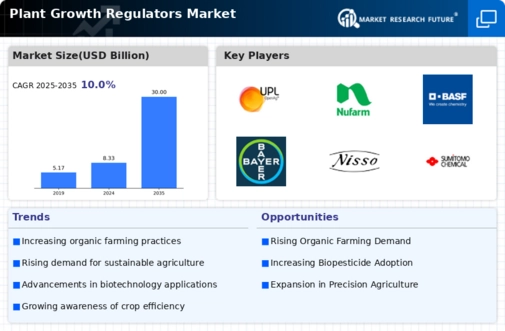Market Analysis
In-depth Analysis of North America Plant Growth Regulators Market Industry Landscape
The North American Plant Growth Regulators (PGR) market is emphasizing agricultural production improvement. Farmers are using PGRs to maximize plant growth, yields, and productivity as climate change and population expansion affect agriculture. The PGR market in North America is moving toward ecological farming. To get the most out of resources, protect the environment, and encourage eco-friendly farming, sustainable farming depends on plant growth controllers. Growing organic farming is driving the North American PGR market. PGRs help organic farmers regulate plant growth, improve nutrient absorption, and cultivate healthy, robust crops without chemicals. Market dynamics show how PGRs improve crop quality. North American farmers use PGRs to improve fruit and vegetable size, color, and uniformity, fulfilling customer demand for high-quality food and boosting agricultural profits. Continuous PGR formulation technology advances affect market dynamics. Manufacturing new PGR formulations with better effectiveness, simplicity of administration, and tailored plant growth impacts allows farmers to fulfill their goals more precisely. Precision agriculture is growing across North America, and PGR market dynamics reflect this. Precision farming now uses PGRs to selectively administer growth regulators to crops or regions, optimising resource consumption and reducing environmental effect. Government programs encouraging sustainable agriculture drive the North American PGR market. As a sustainable way to increase crop yield and reduce the environmental impact, PGRs are encouraged by subsidies, incentives, and laws. Market dynamics indicate that North American farmers are becoming more aware of PGR advantages. Educational initiatives, training, and information distribution promote PGR application comprehension and decision-making in varied crops and production circumstances. The North American PGR market is versatile since PGRs are used in many crops. Cereals, fruits, vegetables, and ornamental plants benefit from PGR formulas adapted to their development needs. The North American regulatory structure makes PGR registration and compliance difficult. PGR makers must fulfill strict safety, effectiveness, and environmental impact standards to be approved and used, affecting market dynamics. Research and development collaborations are important in North America's PGR market. Manufacturers are working with academic institutes and agricultural groups to create novel PGR solutions to solve changing agricultural concerns and improve farming sustainability. Market dynamics show that enterprises are diversifying PGR product portfolios to enhance their market position. Manufacturers are developing novel formulations and solutions with varied modes of action to meet the demands of different crops and provide farmers more plant growth control alternatives.












Leave a Comment